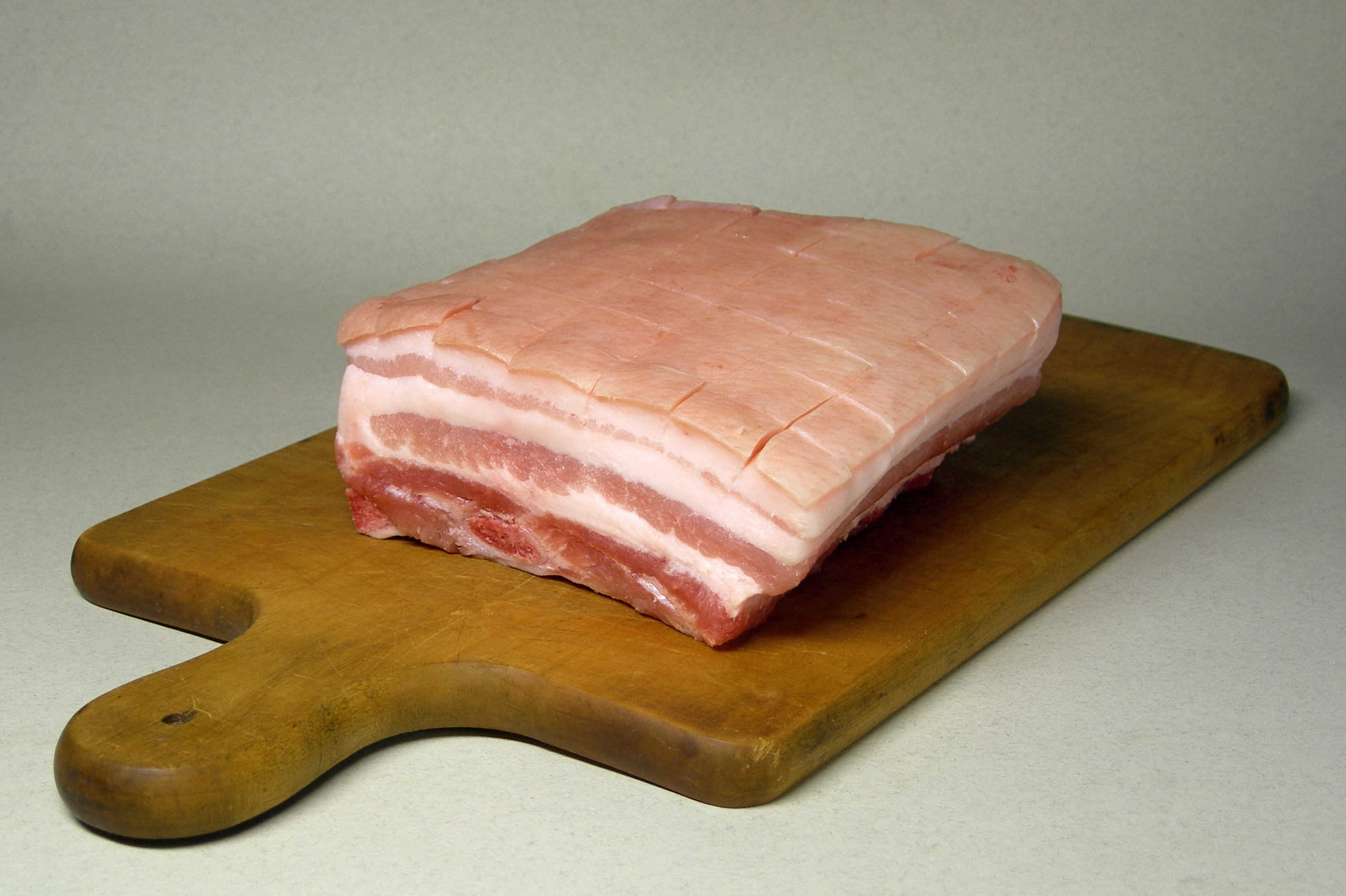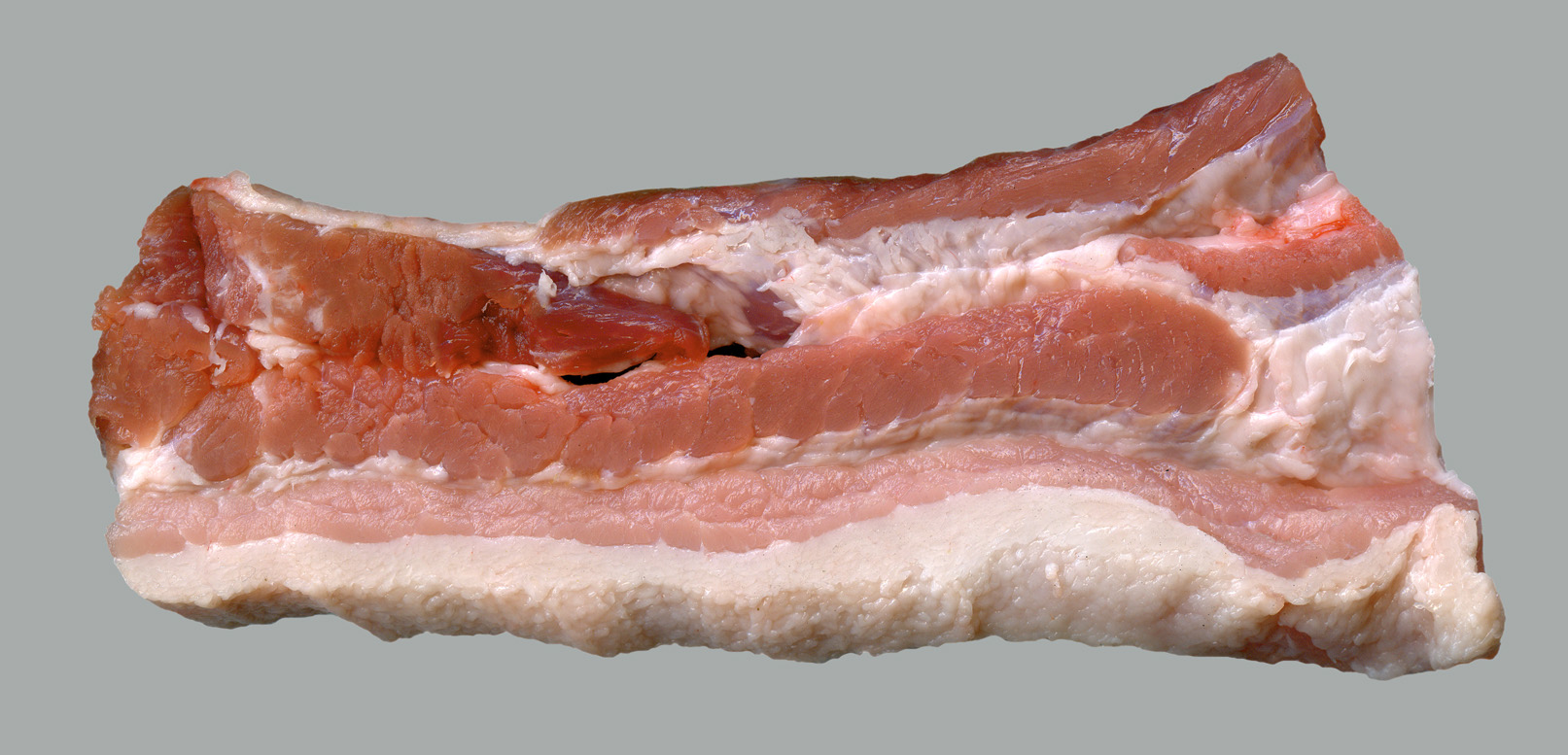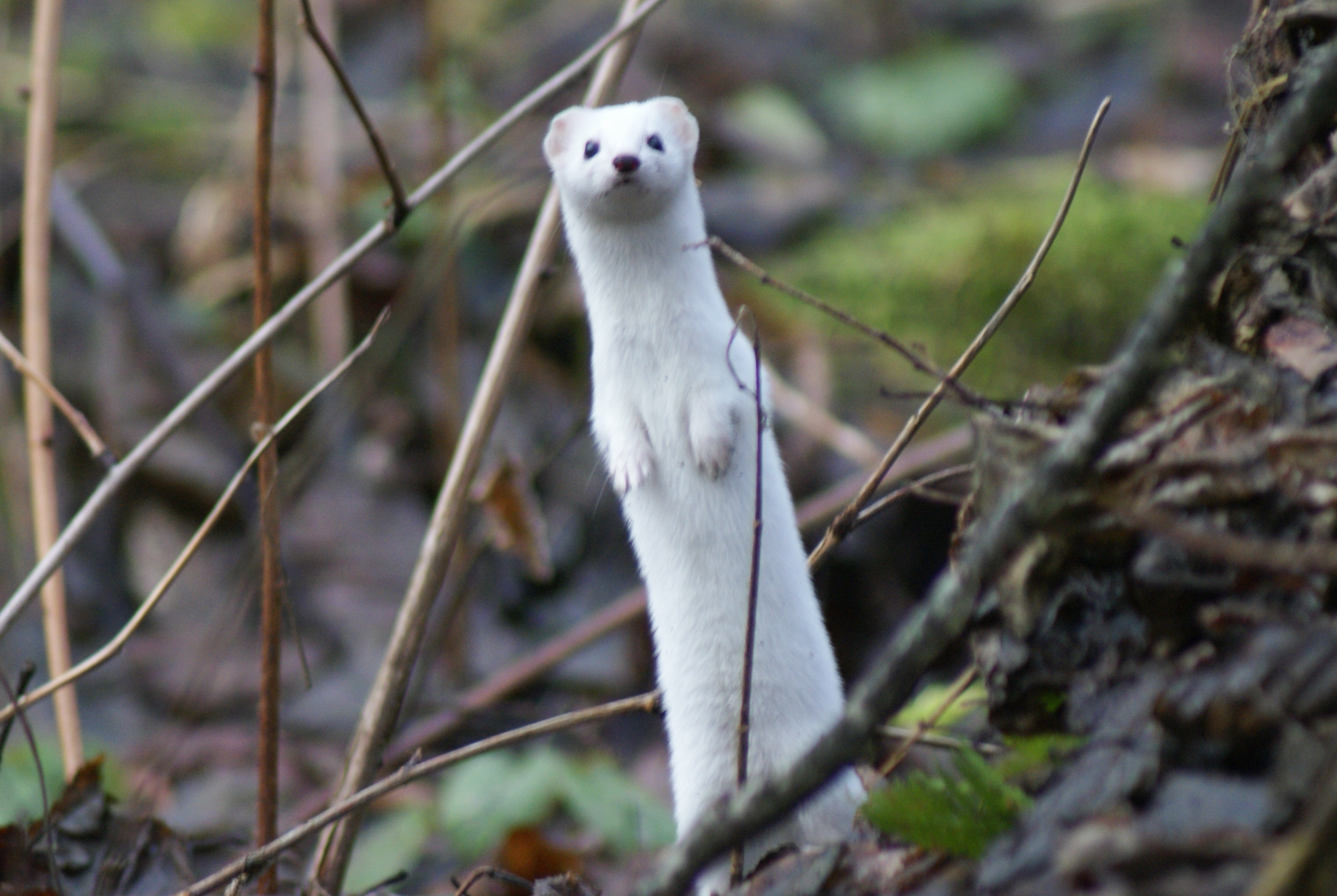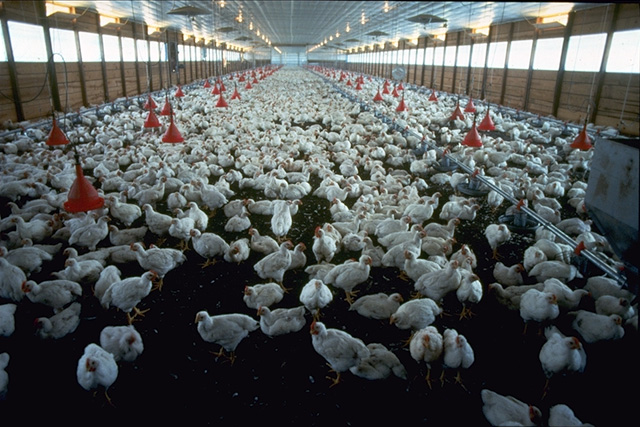|
Welsh Pig
The Welsh is a breed of domestic pig native to Wales. It is a large white breed known for its hardiness in outdoor (extensive) farming, its long, pear-shaped body and its lop-ears. The breed was first mentioned in the 1870s, and after the Howitt committee report in 1955, became the third most common sire in the United Kingdom after the Large White pig and British Landrace pig. The Welsh pig experienced a decline in numbers in the late twentieth century because consumer demands had changed and the carcase was considered too fatty. In 2005 the breed was considered endangered and later came under the auspices of the Rare Breeds Survival Trust. Since then numbers have expanded somewhat, and by 2012, the registered breeding herd had increased to over 1000 animals. History Pigs with lop ears have been raised in Wales since time immemorial. The Welsh Pig comes from various Welsh towns. In Mid Wales, Montgomery and Cardigan and also in Carmarthen and Pembroke. The earliest refe ... [...More Info...] [...Related Items...] OR: [Wikipedia] [Google] [Baidu] [Amazon] |
Ysbyty Ifan
Ysbyty Ifan (formerly anglicised as ''Yspytty Ifan'') is a small, historic village and community (Wales), community in the Conwy County Borough of Wales. The population in 2011 was 196 in 76 households (29 household spaces had no usual residents); over 79% of the population were able to speak Welsh language, Welsh. It has one of the smallest populations of any Welsh community, the smallest being Ganllwyd. It is in the electoral ward of Uwch Conwy. History Ysbyty Ifan, until about 1190, was known as . Then, it came to the attention of the Knights of St John, Knights of St John, the Order of Hospitallers, who set up a hospital to care for pilgrims and also to be a hostel for them on their journeys (Ysbyty Ifan means ''hospital of St John''). Ysbyty Ifan was on the ancient pilgrimage routes, for example, from Bangor Is Coed (Bangor-on-Dee) to Caer Gybi (fort), Holyhead and Bardsey Island and the Cistercian Way (Wales), Cistercian Way between Aberconwy Abbey, Aberconwy and Cymer Ab ... [...More Info...] [...Related Items...] OR: [Wikipedia] [Google] [Baidu] [Amazon] |
Commercial Agriculture
Intensive agriculture, also known as intensive farming (as opposed to extensive farming), conventional, or industrial agriculture, is a type of agriculture, both of crop plants and of animals, with higher levels of input and output per unit of agricultural land area. It is characterized by a low fallow ratio, higher use of inputs such as capital, labour, agrochemicals and water, and higher crop yields per unit land area. Most commercial agriculture is intensive in one or more ways. Forms that rely heavily on industrial methods are often called industrial agriculture, which is characterized by technologies designed to increase yield. Techniques include planting multiple crops per year, reducing the frequency of fallow years, improving cultivars, mechanised agriculture, controlled by increased and more detailed analysis of growing conditions, including weather, soil, water, weeds, and pests. Modern methods frequently involve increased use of non-biotic inputs, such as fe ... [...More Info...] [...Related Items...] OR: [Wikipedia] [Google] [Baidu] [Amazon] |
Pork
Pork is the culinary name for the meat of the pig (''Sus domesticus''). It is the most commonly consumed meat worldwide, with evidence of pig animal husbandry, husbandry dating back to 8000–9000 BCE. Pork is eaten both freshly cooked and preserved; Curing (food preservation), curing extends the shelf life of pork products. Ham, Gammon (meat), gammon, bacon, and sausage, pork sausage are examples of preserved pork. Charcuterie is the branch of cooking devoted to prepared meat products, many from pork. Pork is the most popular meat in the Western world, particularly in Central Europe. It is also very popular in East Asia, East and Southeast Asia (Mainland Southeast Asia, Philippines, Singapore, and East Timor). The meat is highly prized in Asian cuisines, especially in China (including Hong Kong) and Northeast India, for its fat content and texture. Some religions and cultures Religious restrictions on the consumption of pork, prohibit pork consumption, notably Islami ... [...More Info...] [...Related Items...] OR: [Wikipedia] [Google] [Baidu] [Amazon] |
Bacon
Bacon is a type of Curing (food preservation), salt-cured pork made from various cuts of meat, cuts, typically the pork belly, belly or less fatty parts of the back. It is eaten as a side dish (particularly in breakfasts), used as a central ingredient (e.g., the BLT, BLT sandwich), or as a flavouring or accent. Regular bacon consumption is associated with increased mortality and other health concerns. Bacon is also used for #Bacon fat, barding and larding roasts, especially game, including venison and pheasant, and may also be used to insulate or flavour roast joints by being layered onto the meat. The word is derived from the Proto-Germanic , meaning . Meat from other animals, such as beef, Lamb and mutton, lamb, chicken (food), chicken, goat meat, goat, or turkey meat, turkey, may also be cut, cured, or otherwise prepared to resemble bacon, and may even be referred to as, for example, "turkey bacon". Such use is common in areas with significant Kashrut, Jewish and Islamic ... [...More Info...] [...Related Items...] OR: [Wikipedia] [Google] [Baidu] [Amazon] |
Razorback
A feral pig is a pig, domestic pig which has gone feral, meaning it lives in the wild. The term feral pig has also been applied to wild boars, which can interbreed with domestic pigs. They are found mostly in the Americas and Australia. Razorback and wild hog are sometimes used in the United States in reference to feral pigs or boar–pig hybrids. Definition A feral organism, feral pig is a domestic pig that has escaped or been released into the wild, and is living more or less as a wild animal, or one that is descended from such animals. Zoologists generally exclude from the ''feral'' category animals that, although captive, were genuinely wild before they escaped. Accordingly, Eurasian wild boar, released or escaped into habitats where they are not native, such as in North America, are not generally considered feral, although they may interbreed with feral pigs. Likewise, reintroduced wild boars in Western Europe are also not considered feral, despite the fact that they were ... [...More Info...] [...Related Items...] OR: [Wikipedia] [Google] [Baidu] [Amazon] |
Coat (animal)
Coat is the nature and quality of a mammal's fur. In the animal fancy, coat is an attribute that reflects the quality of a specimen's Selective breeding, breeding as well as the level of the animal's Animal husbandry, care, conditioning, and management. Coat is an integral aspect of the judging at competitions such as a Conformation show, conformation dog show, a cat show, a horse show (especially Horse showmanship, showmanship classes), or a American Rabbit Breeders Association#Rabbit shows, rabbit show. The pelage of a show animal may be divided into different types of hair, fur or wool with a texture ranging from downy to spiky. In addition, the animal may be single-coated or may have a number of coats, such as an Fur#Down hair, undercoat and a topcoat (also called an ''outer coat'' or, sometimes, ''overcoat''), which is made up of Fur#Guard hair, guard hair. The state of the coat is considered an indication of the animal's selective breeding, breeding and health. Animals mig ... [...More Info...] [...Related Items...] OR: [Wikipedia] [Google] [Baidu] [Amazon] |
Corporate Farming
Corporate farming is the practice of large-scale agriculture on farms owned or greatly influenced by large companies. This includes corporate ownership of farms and the sale of Agricultural production, agricultural products, as well as the roles of these companies in influencing agricultural education, research, and public policy through funding initiatives and lobbying efforts. The definition and effects of corporate farming on agriculture are widely debated, though sources that describe large businesses in agriculture as "corporate farms" may portray them negatively. Definitions and usage The varied and fluid meanings of "corporate farming" have resulted in conflicting definitions of the term, with implications in particular for legal definitions. Legal definitions Most legal definitions of corporate farming in the United States pertain to tax laws, anti-corporate farming laws, and census data collection. These definitions mostly reference farm income, indicating farms ove ... [...More Info...] [...Related Items...] OR: [Wikipedia] [Google] [Baidu] [Amazon] |
Rare Breed (agriculture)
In modern agriculture, a rare breed is a breed of poultry or livestock that has a very small breeding population, usually from a few hundred to a few thousand. Because of their small numbers, rare breeds may have a threatened conservation status, and they may be protected under regional laws. Many countries have organizations devoted to the protection and promotion of rare breeds, for which they each have their own definition. In botany and horticulture, the parallel to rare animal breeds are heirloom plants, which are rare cultivars. Definitions There are several definitions of "breed" and "rare breed". Breeds may be defined as a group of animals that share visible characteristics, such as Pinto horses, which are all spotted. A stricter definition insists that breeds are "consistent and predictable genetic entities", which means that individuals from that breed will produce offspring that is predictably similar to their genitors, and that this similarity is genetically based. ... [...More Info...] [...Related Items...] OR: [Wikipedia] [Google] [Baidu] [Amazon] |
World War II
World War II or the Second World War (1 September 1939 – 2 September 1945) was a World war, global conflict between two coalitions: the Allies of World War II, Allies and the Axis powers. World War II by country, Nearly all of the world's countries participated, with many nations mobilising all resources in pursuit of total war. Tanks in World War II, Tanks and Air warfare of World War II, aircraft played major roles, enabling the strategic bombing of cities and delivery of the Atomic bombings of Hiroshima and Nagasaki, first and only nuclear weapons ever used in war. World War II is the List of wars by death toll, deadliest conflict in history, causing World War II casualties, the death of 70 to 85 million people, more than half of whom were civilians. Millions died in genocides, including the Holocaust, and by massacres, starvation, and disease. After the Allied victory, Allied-occupied Germany, Germany, Allied-occupied Austria, Austria, Occupation of Japan, Japan, a ... [...More Info...] [...Related Items...] OR: [Wikipedia] [Google] [Baidu] [Amazon] |
Pembroke, Pembrokeshire
Pembroke ( ; ) is a town and community (Wales), community in Pembrokeshire, Wales, with a population of 7,552. The names of both the town and the county (of which the county town is Haverfordwest) have a common origin; both are derived from the Cantref of Penfro: , 'head' or 'end', and , 'region', 'country', 'land', which has been interpreted to mean either 'Land's End' or 'headland'. Pembroke features a number of historic buildings, town walls, complexes and Pembroke Castle which was the birthplace of Henry Tudor, who became . History Pembroke Castle, the substantial remains of a stone mediæval, medieval castle, fortress founded by the Normans in 1093, stands at the western tip of a peninsula surrounded by water on three sides. The castle was the seat of the powerful Earls of Pembroke and the birthplace of King Henry VII of England. Gerald de Windsor was the first recorded Constable of Pembroke. Pembroke town and castle and its surroundings are linked with the early Christ ... [...More Info...] [...Related Items...] OR: [Wikipedia] [Google] [Baidu] [Amazon] |
Domestic Pig
The pig (''Sus domesticus''), also called swine (: swine) or hog, is an omnivorous, domesticated, even-toed, hoofed mammal. It is named the domestic pig when distinguishing it from other members of the genus '' Sus''. Some authorities consider it a subspecies of ''Sus scrofa'' (the wild boar or Eurasian boar); other authorities consider it a distinct species. Pigs were domesticated in the Neolithic, both in China and in the Near East (around the Tigris Basin). When domesticated pigs arrived in Europe, they extensively interbred with wild boar but retained their domesticated features. Pigs are farmed primarily for meat, called pork. The animal's skin or hide is used for leather. China is the world's largest pork producer, followed by the European Union and then the United States. Around 1.5 billion pigs are raised each year, producing some 120 million tonnes of meat, often cured as bacon. Some are kept as pets. Pigs have featured in human culture since Neolithic time ... [...More Info...] [...Related Items...] OR: [Wikipedia] [Google] [Baidu] [Amazon] |
Carmarthen
Carmarthen (, ; , 'Merlin's fort' or possibly 'Sea-town fort') is the county town of Carmarthenshire and a community (Wales), community in Wales, lying on the River Towy north of its estuary in Carmarthen Bay. At the 2021 United Kingdom census, 2021 census the community had a population of 14,636, and the built up area had a population of 16,455. It stands on the site of a Roman Britannia, Roman town, and has a claim to be the oldest town in Wales. In the middle ages it comprised twin settlements: ''Old Carmarthen'' around Carmarthen Priory and ''New Carmarthen'' around Carmarthen Castle. The two were merged into one borough in 1546. It was the most populous borough in Wales in the 16th–18th centuries, described by William Camden as "chief citie of the country". It was overtaken in size by the mid-19th century, following the growth of settlements in the South Wales Coalfield. History Early history When Roman Britain, Britannia was a Roman province, Carmarthen was the c ... [...More Info...] [...Related Items...] OR: [Wikipedia] [Google] [Baidu] [Amazon] |








